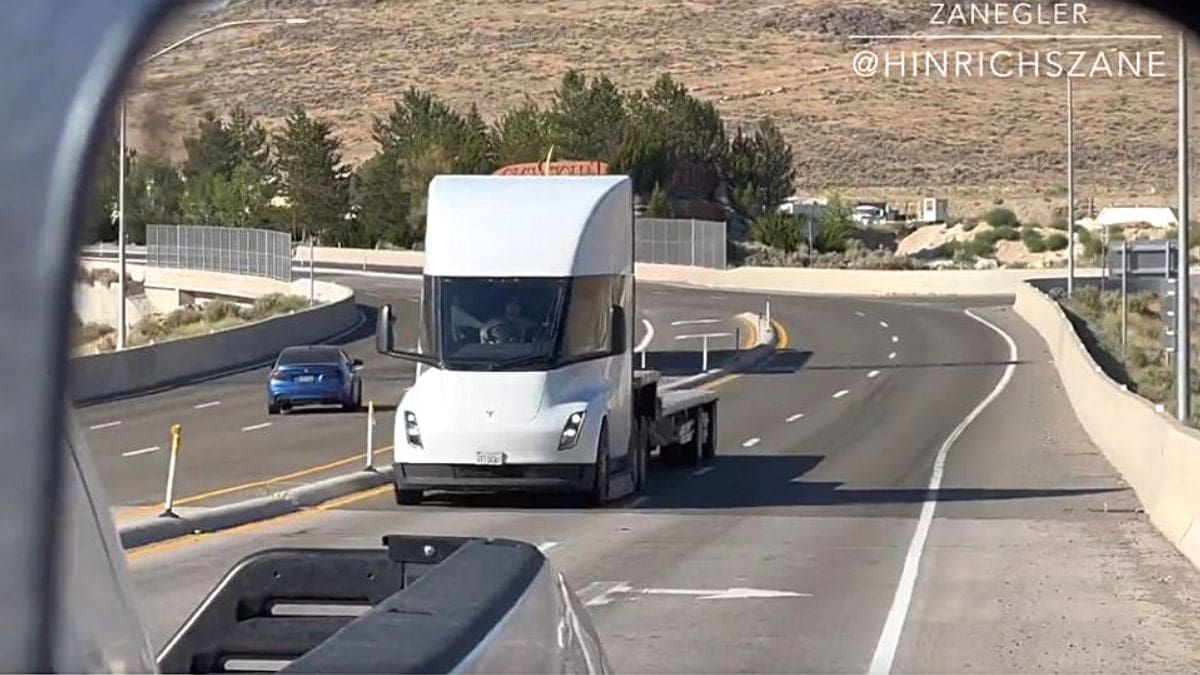Yesterday I published the story about Tesla Semi appearing tough in a rear mirror and how it made a sharp left turn. One user made a comment under the Torque News Youtube channel, which I thought needed to be addressed.
Referring to the Tesla Semi, the user wrote, "It looks ugly and too plastic and i hope this driver will not go with it into this desert place because if he gets out of battery power you can only tow it while with fuel semi someone can give you or bring 10-20 liters of fuel while for electric semi or vehicles, nobody would bring you 10-20 kw of electricity."
In response to the user's comment about the Tesla Semi, I would like to address the concerns raised and provide information on how Tesla can handle similar situations or avoid them.
The user's comment expresses concerns about the appearance of the Tesla Semi, its potential limitations in a desert environment, and the perceived inconvenience of running out of battery power. Let's break down each concern and provide relevant information:
Aesthetic Concerns: "it looks ugly and too plastic"
Aesthetic preferences can vary from person to person, and while some might find the design of the Tesla Semi less appealing, it's important to note that the design of a commercial vehicle like the Semi is often prioritized for functionality and aerodynamics rather than pure aesthetics. By the way there are at least three different versions of Tesla Semi's design, in case you haven't seen them.
Tesla's focus on energy efficiency, performance, and functionality might influence the design choices they make.
Performance in a Desert Environment: "I hope this driver will not go with it into this desert place"
Electric vehicles, including the Tesla Semi, can perform well in desert environments. Electric motors are not as susceptible to temperature changes as internal combustion engines. Additionally, Tesla vehicles have advanced thermal management systems to regulate battery temperature, which is essential for maintaining optimal performance in extreme conditions. While desert heat can impact battery efficiency, Tesla's battery management systems are designed to mitigate these effects.
Range Anxiety and Recharging Concerns: "if he gets out of battery power"
The comment raises concerns about range anxiety and the availability of recharging options in remote areas. Tesla Semi's battery pack is estimated to be around 900 kWh, giving it a substantial range. Additionally, Tesla has been actively expanding its Supercharger network, which includes high-speed charging stations across various locations. This network's expansion could alleviate range anxiety by providing convenient charging options, even in remote areas.
Comparing Refueling Options: "fuel semi someone can give you or bring 10-20 liters of fuel while for electric semi or vehicles nobody would bring you 10-20 kw of electricity"
It's important to note that while traditional fuel might be easier to transport, electric charging infrastructure is growing rapidly. Tesla's Supercharger network, as well as other charging solutions, can provide fast charging options that significantly reduce charging times compared to conventional charging outlets.
Additionally, many electric utilities and service providers are working on solutions for on-the-go charging and emergency power assistance.
So while concerns about the appearance and practicality of electric vehicles, particularly in challenging environments, are valid, Tesla has been addressing these concerns through their battery technology, thermal management systems, charging infrastructure expansion, and innovative approaches to charging in remote areas. The Tesla Semi's large battery capacity, efficient energy use, and the company's commitment to advancing electric vehicle technology contribute to its potential to perform effectively even in challenging conditions like deserts.
Armen Hareyan is the founder and the Editor in Chief of Torque News. He founded TorqueNews.com in 2010, which since then has been publishing expert news and analysis about the automotive industry. He can be reached at Torque News Twitter, Facebok, Linkedin and Youtube.





